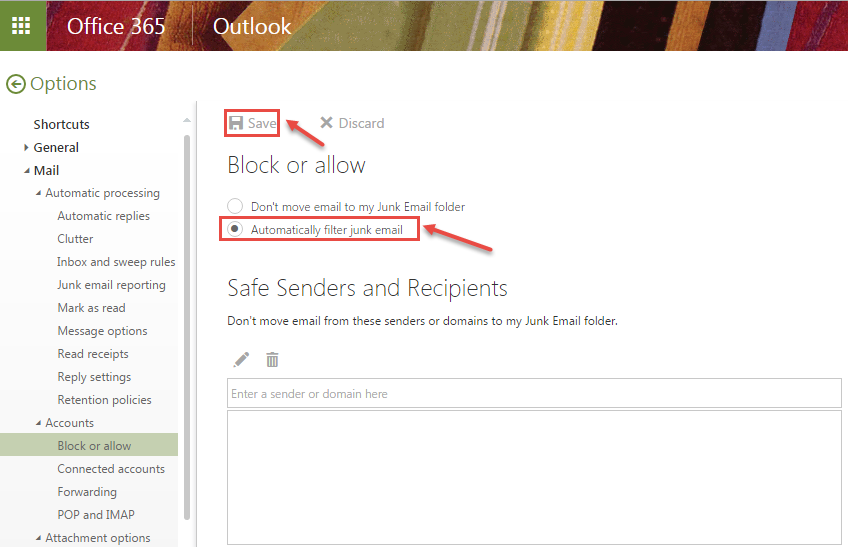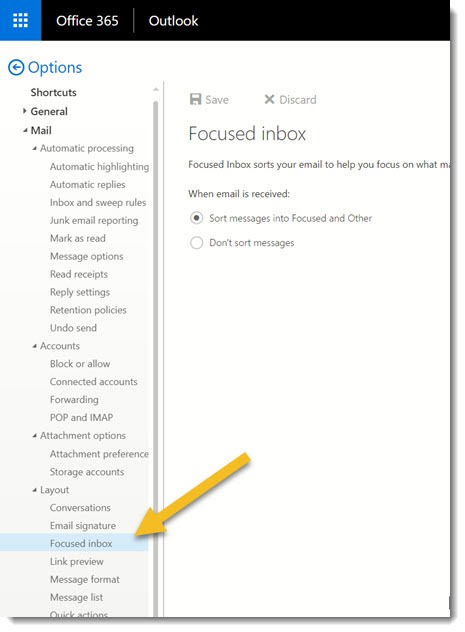
To open a selected task as a Journal item, press Ctrl + J. To forward a task as an attachment, press Ctrl + F. To open the Go to Folder dialog box, press Ctrl + Y. To decline a task request, press Alt + D. To show or hide the To Do Bar, press Alt + F2. To delete a selected task, press Ctrl + D. To print a selected task, press Ctrl + P. To create a task (from any Outlook view), press Ctrl + Shift + K. To create a task (when in Tasks), press Ctrl + N. To dial a new call, press Ctrl + Shift + D. To create a Journal entry for the selected contact, press Ctrl + J. To print the selected contact form, press Ctrl + P.
Outlook 365 shortcuts mark as read update#
To update a list of Contact List members, press F5.

To create a Contact List, press Ctrl + Shift + L. To use the Advanced Find, press Ctrl + Shift + F. To find a contact, press F3 or press Ctrl + E. To open a contact form for the selected contact, press Ctrl + O. To create a message that uses the selected contact as subject, press Ctrl + F. To create a contact (from any Outlook view), press Ctrl + Shift + C. To create a contact (when in Contacts)., press Ctrl + N. To switch to Work Week view, press Ctrl + Alt + 2.
Outlook 365 shortcuts mark as read full#
To switch to Full Week view, press Alt + minus sign or Ctrl + Alt + 3. To go to the end of the week, press Alt + End. To go to the start of the week, press Alt + Home. To go to a date, press Ctrl + G and then choose a date in the dialog box. To go to the previous month, press Alt + page up. To go to the next month, press Alt + page down. To go the previous week, press Alt + up arrow. To go to the next week, press Alt + down arrow. To go the previous day, press Ctrl + left arrow. To go to the next day, press Ctrl + right arrow. To switch to month view, press Alt + = or Ctrl + Alt + 4. To show 1 day in the calendar, press Alt + 1. To forward an appointment or meeting, press Ctrl + F. To reply all to a meeting request with a message, press Ctrl + Shift + R. To reply to a meeting request with a message, press Ctrl + R. To create a meeting request, press Ctrl + Shift + Q. To go to next appointment (when in calendar), press Ctrl + period or Ctrl + Shift + period. To go to the previous appointment (when in calendar), press Ctrl + comma or Ctrl + Shift + comma. To create an appointment (in any Outlook view), press Ctrl + Shift + A. To create an appointment (when in a Calendar), press Ctrl + N. To access Find or Replace in the message, press F4. To switch to the Outbox, press Ctrl + Shift + O. To switch to the Inbox, press Ctrl + Shift + I. To mark a message as unread, press Ctrl + U.

To mark a message as read, press Ctrl + Q. To switch to the previous message (with message open), press Ctrl + comma. To switch to the next message (with message open), press Ctrl + period. To move down to the next message in a message list, press the down arrow. To move up to the previous message in a message list, press the up arrow. To reply all to a message, press Ctrl + Shift + R. To open a received message, press Ctrl + O. To check for new messages, press Ctrl + M or F9. To send a message, press Ctrl + Enter or Alt + S. To create a new message (from any Outlook view), press Ctrl + Shift + M.

To create a new message (when in Mail), press Ctrl + N. To move around message header lines in the Navigation Pane or an open message, press Ctrl + Tab. To move between the Outlook window, the smaller panes in the Navigation Pane, the Reading Pane, the sections in the To-Do Bar and show the access keys in the Ribbon, press F6. To move between the Outlook window, the smaller panes in the Navigation Pane, the Reading Pane and the sections in the To-Do Bar, press Tab. To move between the Navigation Pane, the main Outlook window, the Reading Pane and the To-Do Bar, press Ctrl + Shift + Tab or Shift + Tab. To open the Address Book, press Ctrl + Shift + B. To go to the Search box, press F3 or Ctrl + E. To switch to Folder List in Navigation Pane, press Ctrl + 6. Recommended article: No Mouse? Using Keyboard Only Navigation in Microsoft Office Basic navigation Helpful Outlook Keyboard Shortcuts for Email, Calendars, Contacts and Tasksīy Avantix Learning Team | Updated July 31, 2020Īpplies to: Microsoft Outlook 2010, 2013, 2016, 2019 and 365 (Windows)Ĭheck out these 75 Microsoft Outlook shortcuts to work faster with emails, calendars, contacts and tasks.


 0 kommentar(er)
0 kommentar(er)
